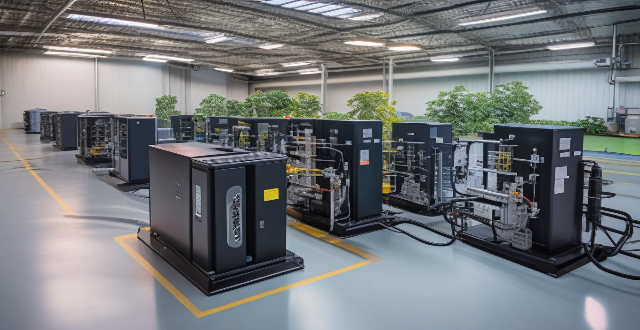Flow batteries and traditional chemical batteries are both used for energy storage, but differ in aspects such as energy storage mechanism, power and energy density, lifespan and maintenance, and cost and scalability. Traditional chemical batteries store energy through chemical reactions within cells and have a fixed capacity, while flow batteries use external tanks of electrolyte solutions and have adjustable capacity. Traditional chemical batteries can deliver high power output per unit weight or volume and have moderate energy density, while flow batteries typically have lower power density but higher energy density. Traditional chemical batteries have a limited number of charge and discharge cycles before performance degrades and require regular maintenance, while flow batteries can undergo a larger number of cycles without significant degradation and require less maintenance. Traditional chemical batteries often have higher upfront costs and limited scalability, while flow batteries generally have lower upfront costs and offer more flexibility in scaling up. The choice between the two depends on the specific requirements of the energy storage application.

Comparison between Flow Batteries and Traditional Chemical Batteries
Flow batteries and traditional chemical batteries are both used for energy storage, but they differ in several key aspects. Here's a detailed comparison:
Energy Storage Mechanism
Traditional Chemical Batteries
- Chemical Reactions: They store energy through chemical reactions within the battery cells.
- Fixed Capacity: The amount of energy stored is determined by the size and quantity of the cells.
Flow Batteries
- Electrolyte Solutions: They store energy in external tanks of electrolyte solutions.
- Adjustable Capacity: The capacity can be increased by adding more electrolyte solution to the tanks.
Power and Energy Density
Traditional Chemical Batteries
- High Power Density: They can deliver high power output per unit weight or volume.
- Moderate Energy Density: They have moderate energy density, which limits their usage time on a single charge.
Flow Batteries
- Lower Power Density: They typically have lower power density compared to chemical batteries.
- High Energy Density: They can achieve higher energy density, allowing for longer discharge times.
Lifespan and Maintenance
Traditional Chemical Batteries
- Limited Cycle Life: They have a limited number of charge and discharge cycles before performance degrades.
- Regular Maintenance: They require regular maintenance to ensure optimal performance.
Flow Batteries
- Longer Cycle Life: They can undergo a larger number of charge and discharge cycles without significant degradation.
- Low Maintenance: They require less maintenance due to their simpler design and fewer moving parts.
Cost and Scalability
Traditional Chemical Batteries
- Higher Upfront Cost: They often have higher upfront costs, especially for large-scale applications.
- Limited Scalability: Scaling up requires adding more individual units, which can be complex and costly.
Flow Batteries
- Lower Upfront Cost: They generally have lower upfront costs, making them attractive for large-scale installations.
- Easier Scalability: Scaling up involves simply increasing the size of the electrolyte tanks, offering more flexibility.
In summary, flow batteries offer advantages in terms of scalability, cycle life, and maintenance, while traditional chemical batteries excel in power density and established technology. The choice between the two depends on the specific requirements of the energy storage application.